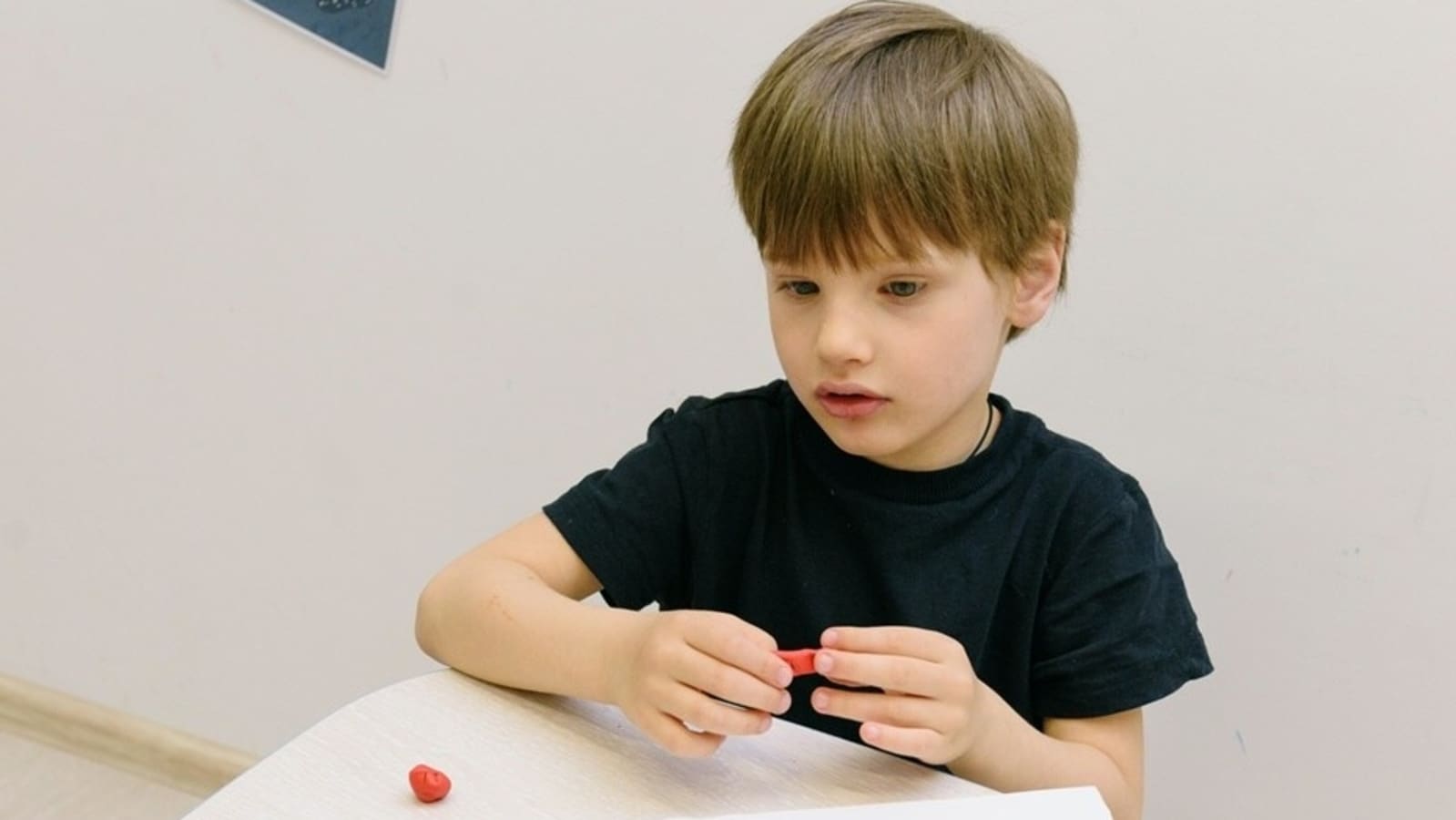[ad_1]
OCD or obsessive compulsive disorder is a neurobiological disorder which affects around 1-4% of people in the world. Around 8 in 10 people suffering from OCD develop it by a young age of 18 years old. Considering the disorder has more chances of beginning in childhood, its common symptoms should not be missed. According to the American Psychiatric Association’s Diagnostic and Statistical Manual of Mental Disorders, 5th edition (DSM-5), OCD is defined as a condition with obsessions (repeating urges or ideas that are irrational and intrusive) combined with compulsions (recurring behaviours) interfering with the person’s quality of life and often in association with other neurodevelopmental or psychiatric conditions. If your child repeatedly performs a task seeking perfection, checks on locks all the time, washes hands excessively, has disturbing thoughts about hurting others and encountering other such intrusive thoughts, parents should immediately get help. (Also read: Labels like ‘psycho’ or ‘schizo’ can hurt. Here are alternative clinical terms)
“Children with OCD have obsessive thoughts that are not wanted. These are linked to fears, such as touching dirty objects. They use compulsive rituals to control the fears, such as excessive handwashing,” says Dr. Amitoj Singh Chhina, Consultant- Pediatrics and Neonatology, Cloudnine Group of Hospitals, Benagluru.
“Preschool children often have rituals and routines around meals, bathing, and bedtime; these help stabilise their expectations and view of their world. Older children often create group rituals as they learn to play games, take part in team sports, and recite rhymes. Teenagers start to collect objects and have hobbies. These help them to socialise and learn to deal with anxiety,” adds Dr Amitoj.
Paediatric OCD caused by streptococcal infection can causes children to begin having severe symptoms of OCD, often with rapid progression. This sudden appearance is very different from general paediatric OCD, which has a more gradual course.
Causes of OCD
Dr Amitoj says the exact cause of OCD is not known and various underlying aetiologic factors have been proposed in the development of OCD in humans of various ages, ranging from behavioural issues to changes in certain parts of the brain and lack of a chemical called serotonin in the brain.
OCD tends to run in families and may have a genetic component. But it may also occur without a family history. In some cases, streptococcal infections may trigger OCD or make it worse.
What are the symptoms of OCD in children
Obsessions are intrusive and unwanted thoughts, images, or urges that occur over and over again and feel outside of the children’s control. These are unpleasant and typically cause a lot of anxiety and distress.
Common obsessions may include:
▪ Worrying about germs, falling ill, or dying.
▪ Extreme fears about bad things happening or doing something wrong.
▪ Feeling that things have to be ‘just right.’
▪ Disturbing and unwanted thoughts or images about hurting others.
▪ Disturbing and unwanted thoughts or images of a sexual nature.
Compulsions (or rituals) are behaviours that children feel they ‘must do’ with the intention of getting rid of the upsetting feelings caused by the obsessions. They may also believe that engaging in these compulsions will somehow prevent bad things from happening.
Common compulsions may involve:
▪ Excessive checking: Repeatedly re-checking that the door is locked.
▪ Excessive washing, scrubbing and cleaning.
▪ Repeating actions until they are ‘just right’ or starting things over again.
▪ Arranging things in a particular order.
▪ Mental compulsions: Excessive praying, mental reviewing
▪ Frequently confessing or apologising.
▪ Repeating lucky words or numbers.
▪ Excessive reassurance seeking, like frequently asking, ‘Are you sure I’m going to be okay?’
How is OCD diagnosed in children?
A mental health expert, usually a child psychiatrist, can diagnose OCD by doing a mental health evaluation. Children diagnosed with OCD have obsessions and compulsions that are continuous, severe, and disruptive and impact day-to-day living. Typically, the obsessions and compulsions become gradually more severe over time until they get to this point.
“In many cases, the activities of OCD such as handwashing or checking the locks on doors use up a lot of time each day and also cause mental health distress and affect the child’s thinking. While adults may realise that their actions are not normal, to some extent, children can’t recognise that their behaviour is irrational and abnormal,” says Dr Amitoj.
How is OCD treated in children?
Treatment depends on the child’s symptoms, age, general health and severity of the condition.
It often includes a combination of the following:
• Therapy with cognitive and behavioural methods. Cognitive methods help children identify and understand their fears. They also teach children how to better resolve or reduce those fears. Behavioural methods help the children and their family make pacts or rules to limit or change behaviours, like setting a maximum number of times a compulsive handwasher may wash his or her hands.
• Family therapy: Parents are vital to any treatment process. The school may also be involved in care.
• Selective serotonin reuptake inhibitors (SSRIs): These medicines help raise serotonin levels in the brain.
• Antibiotics: These may be needed if the OCD is found to be linked to a streptococcal infection.
Teenagers with OCD may also have one or more types of eating disorders that require treatment.
[ad_2]
Source link


buy cialis and viagra online Deep abdominal pain with penetration could be due to endometriosis, fibroids, or previous pelvic surgery
levitra online pharmacy in usa 37, 40 42 The improvement in median PFS for ribociclib versus placebo was more pronounced in patients with WT versus altered PIK3CA HR 0
cialis vs viagra 7, 8 It has been observed that inactivity is the fourth most leading cause of global mortality